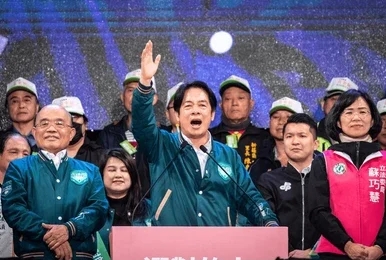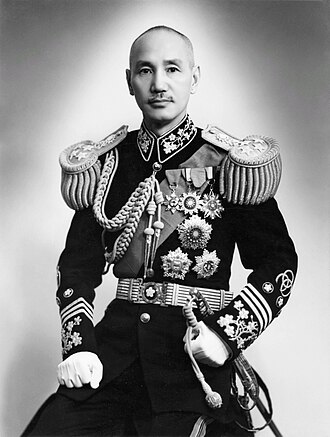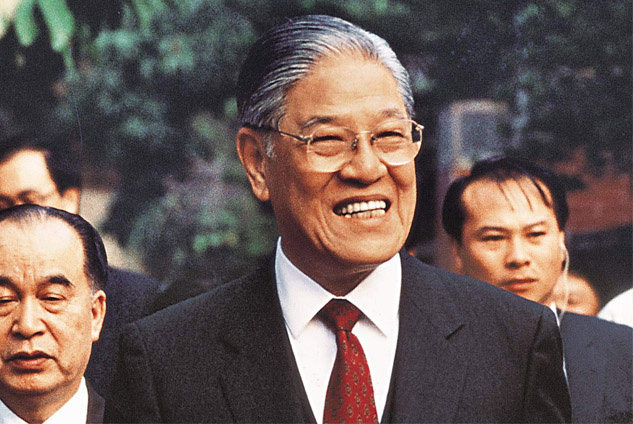Looking back at Taiwan’s history, from the Republic of China to today, its road for democracy and an identity has been a long one, led by a list of differing and contradicting leaders.
By Thomas Cayetanot – 11th grade

Taiwan, one of the Four Asian Tigers, is a country that’s rapidly growing economy has let it remain prominent on the world stage today.
January 13th, 2024, the Taiwanese people voted into office a new president: Lai Ching-te. Coming from the country’s Democratic Progressive Party, and having previously been vice-president, he won with just over 40% of the vote. But, voting has not always been in place for Taiwan’s presidential elections and its people. The country’s history is marked by dictatorship and a well-known conflict with China that suppressed the Taiwanese people’s ability to participate in politics and vote for their president. It took half a century of conflicts and hardships for the people of Taiwan to build an identity separate to China and gain democratic independence.
Chiang Kai-shek, leader of the Kuomintang (KMT: the nationalist party of China) and president of the Republic of China, finds himself forced to flee to Taiwan in 1949. Up until then, Taiwan had been under control of China, after being ceded by Japan at the end of WWII, and found itself far enough from mainland China and from Mao Zedong’s Communist Revolution, to have Chiang and his supporters move there. The KMT nationalist government, followed by 1.5 million supporters, fled to the island, in hopes of organizing a plan to retake China from the now Communist government. But with Mao’s growing power and influence, hopes of retaking China quickly disappeared. And so, Chiang brought over the authoritarian government he had made in China, and over the course of 3 decades, progressively installed a dictatorship over the people of Taiwan.

Even before Chiang’s arrival, suppressive rule had already been established over the island in 1947, with what is now known as the “White Terror”. This was a time period of mass repression, executions and arrests of any political opponents to Chiang, where his government suppressed the will of the people. He would further consolidate power by declaring martial law, putting in place single party rule, and restraining human rights. Chiang and his government favored those who came from mainland China for job opportunities, positions of power and daily life, neglecting and suppressing Taiwanese people. He would instill an authoritarian regime that attempted to indoctrinate students through education, by forcing children into patriotic KMT activities, changing textbooks and launching a Mandarin speaking campaign against local languages.
Chiang managed to install a violent dictatorship until his death in 1975. His vice president Yen Chia-kan took over, but was essentially a puppet president put in place until Chiang Kai-shek’s son, Chiang Ching-kuo, could take over in 1978. With this, Taiwan was given the opportunity to start a transition to democracy and a chance to become Taiwan. Already, the island had started to lose its status as the legitimate government of China. It, for a long time, held China’s seat on the Security Council of the UN, until that was given to the People’s Republic of China, in 1971, as some argued that Chiang’s government did not represent the actual people of China. The US, during this time, moved towards recognizing mainland China as China to open diplomatic, and more importantly, economic relations with the country. And so, in the eyes of the world, Taiwan was no longer the official government of China, but the government of Taiwan. This let the island build its identity apart from China.
With Chiang Ching-kuo, things were able to change, as he was the one who would start Taiwan’s transition to democracy. He saw this change as a necessary path for Taiwan, a necessary step to bring the country out of its economic and diplomatic isolation from the world. And so, he loosened his grip on foreign press and ultimately put an end to the period of bloodshed, to the “White Terror”, in 1987, by lifting martial law. He legalized opposing parties, advanced the country’s economy and opened up relations with other nations. Nevertheless, the leader remained a dictator, one adamant on keeping his grip on power.

At his death in 1988, Lee Teng-hui took over the position, and over his time as president, he completed Taiwan’s transition to democracy. Nicknamed “Mr. Democracy”, he was the first Taiwanese born president, and in 1996, was the first president elected by direct popular vote. He was a candidate that resonated with the people of Taiwan, winning 54% of the vote, more than double of his closest challenger in a four person race. His desire to create an independent international image, and fully move the country and its politics towards democracy is what got him the wide appeal of the 11 million Taiwanese that voted. Despite receiving threats from China, Teng-hui pushed through and eased restrictions on travel to Taiwan, dismantled the KMT secret police and military, reinstated constitutional democracy, terminated efforts to repress communist supporters, and more. He was known for his transparency, often directly communicating with the people of Taiwan on various subjects of national and international concern.
His time as president would come to an end in 2000, and the KMT’s 55 year rule ended with the election of the first Democratic Progressive Party member, Chen Shui-Bian. Over his two terms, he pushed for Taiwan’s identity, most notably redesigning the Taiwanese passport to have ẗhe name “Taiwan” on its cover, and associated himself with the pro-independence movement that seeked detachment from China. Though he continued what his two predecessors had started in maintaining democracy and building a unique Taiwanese identity, his second term was riddled with instances of corruption, and he was later condemned to life in prison for this. Ma Ying-Jeou would be the next president that followed from 2008 until 2016, coming from the KMT. He was popular for his campaign that looked to strengthen Taiwan’s economy, especially after the 2007-2008 financial crisis, and wanted to improve ties with China. He would welcome a Chinese representative for five days at Taipei, seen as an opportunity to deter the country from war, but also as a move towards reunification.
In 2016, he was succeeded by Tsai Ing-wen, the first female president, who undertook strengthening the Taiwanese economy, and led the country’s Covid-19 response. And, as of recently, a new president has been welcomed into office, Lai Ching-te. An election that received international attention, it proved to the world that Taiwan’s people are willing to keep their autonomy and the identity they’ve built up for years. More and more, has the population of the island identified as Taiwanese, instead of Chinese, and become a symbol of resistance and democratic aspirations. Coming from dictatorship, Taiwan’s perseverance has let the country and its people create a democracy. It has let them create their own country, and become Taiwan.


Awesome! Very informative!
LikeLike